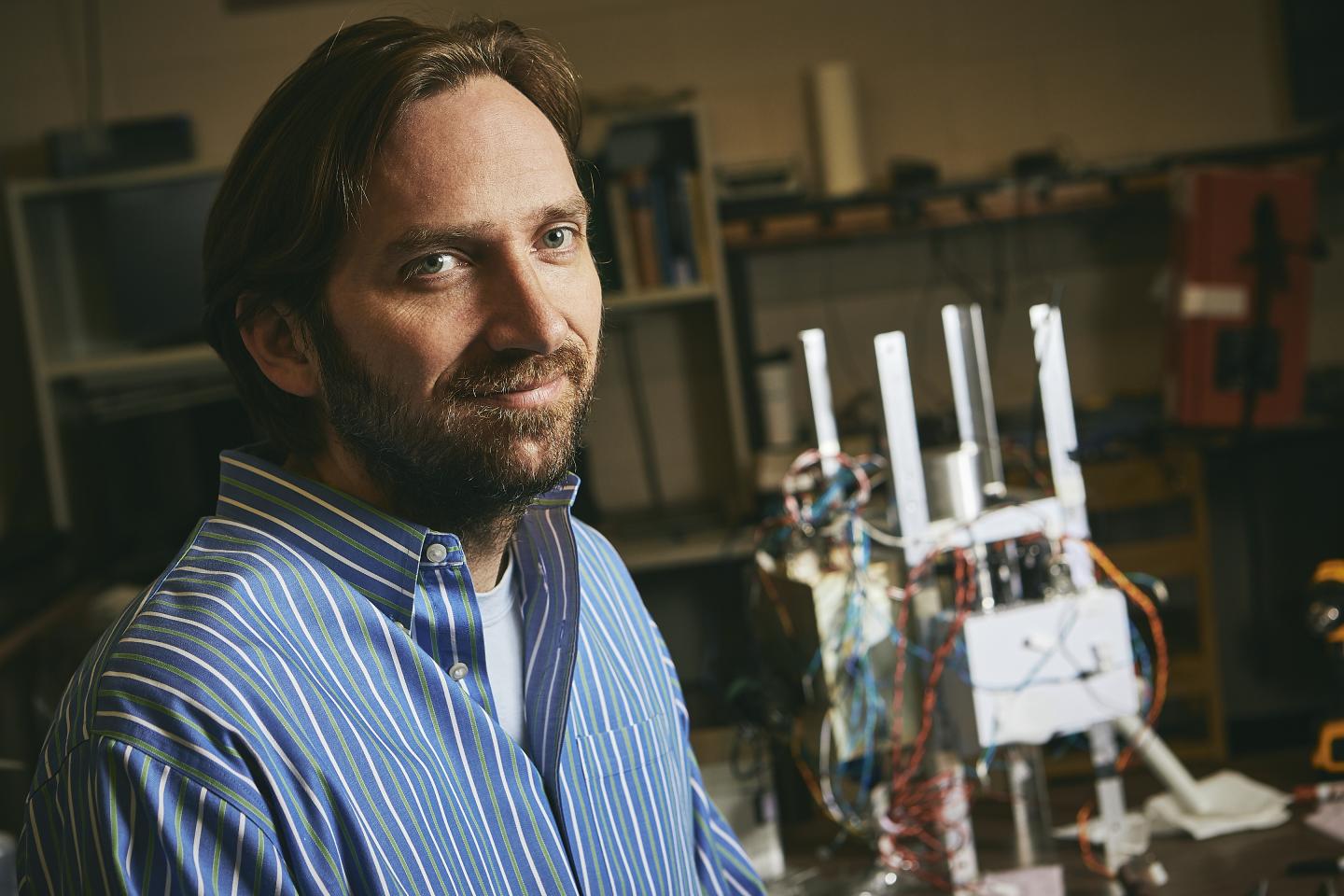
Credit: MSU Photo by Adrian Sanchez-Gonzalez
BOZEMAN — When the shimmering hues of the aurora dance in the night sky, they illuminate for scientists a complex phenomenon: light is emitted when charged particles, ejected by the multimillion-degree surface of the sun, interact with Earth’s magnetic field and collide with atoms in the atmosphere.
“Every time we look at the aurora on finer scales, we see new structures, new swirls and details,” said John Sample, assistant professor in the Department of Physics in Montana State University’s College of Letters and Science. Besides being beautiful, he said, the images provide insights into the physics behind the spectacle.
On the other hand, a more energetic cousin of the aurora remains in many ways a mystery because it is invisible to the human eye. Scientists know that particles more energetic than the aurora’s create split-second bursts of X-rays. But what do these microbursts, as they are called, look like?
“Nobody has a clue,” Sample said. “Nobody has ever taken a picture.”
Sample’s team, which includes researchers from four other universities, hopes to change that using a helium filled balloon larger than MSU’s football stadium. The balloon will carry an X-ray camera to an altitude of 130,000 feet as it travels from Sweden across the Atlantic Ocean to Canada. The project, called Balloon Observations of Microburst Scale, or BOOMS, is backed by a $3 million grant from NASA.
“With BOOMS, we’ll take the first ever high resolution X-ray images (of microbursts),” Sample said.
The results could not only provide insights about the phenomenon but also help NASA and others predict and design for the powerful electrons that react with Earth’s atmosphere to create the X-rays. “These electrons are going so fast — about the speed of light — that they can punch through the aluminum skin of satellites and damage the satellite’s computer,” Sample said. The atmosphere blocks the X-rays from reaching the Earth’s surface, which is why the balloon will be used to carry the X-ray camera aloft.
Some of the first observations of the microbursts were made in the 1960s with balloons carrying X-ray cameras. But the cameras were primitive by today’s standards, according to Sample.
Other observations have come from two NASA spacecraft called the Van Allen Probes, as well as from Antarctic balloon flights conducted during a 2012-2013 project called BARREL, which Sample contributed to as a graduate student. More recently, a pair of small satellites built by undergraduates in MSU’s Space Science and Engineering Laboratory as part of a collaborative research project called FIREBIRD have provided the main data for scientists to estimate the microbursts’ overall size.
But researchers have lacked detailed images of the microbursts to help bring all this data together, according to Robyn Millan, a physics professor at Dartmouth College who led the BARREL project and is now a partner in BOOMS. “We’re getting to the point where we can ask a lot more detailed questions about what’s going on,” she said.
Millan is leading another NASA-funded project that will work together with BOOMS to study the same microbursts at the same time. That project, which is called Relativistic Electron Atmospheric Loss, or REAL, will be centered on a small satellite — called a CubeSat — similar to FIREBIRD’s and also built by undergraduates in MSU’s Space Science and Engineering Laboratory.
“Montana State has a unique expertise with CubeSats,” as the bread loaf-sized spacecraft are called, Millan said. The REAL CubeSat will be launched ahead of the BOOMS flight and will orbit the Earth roughly every 90 minutes, measuring the quantity of microburst electrons, among other things.
Several MSU undergrads majoring in mechanical engineering, electrical engineering, computer science and physics will also help design and build the BOOMS equipment. BOOMS includes researchers at University of Washington, University of California at Berkeley and University of California at Santa Cruz.
According to Sample, the missions could prove a major step forward in advancing scientists’ understanding of the mysterious X-ray counterpart of the aurora. He will have more to say once he sees the X-ray images because, he said, “a picture is worth a thousand words.”
###
Media Contact
John Sample
[email protected]
Original Source
http://www.




